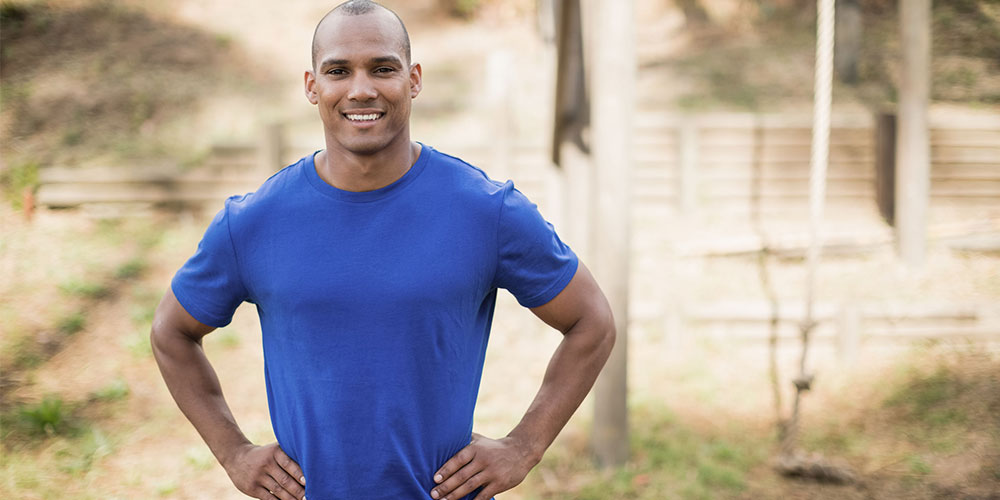
Personal trainers' salaries in Utah are subject to variation. The certification and the location of the training facility will affect the pay. The clientele of premium facilities are typically more well-paid. If you are a certified personal trainer, your salary will be higher still. Offering performance client training can help you earn even more. You can find more information in this article.
Salary range
The average salary for a Utah Personal Trainer is $19,946 per year. You can expect to make $19,946 an year as a Utah Personal Coach, but this will vary depending on your location, skills and experience. Utah has relatively low job openings for Personal Trainers, but that should not discourage you. In a great place, you can still make a living.
The University of Utah offers a Bachelor's Degree in Kinesiology. This program focuses on the effects of physical activity on human health and society. You will be able to work as a personal coach or in another health-related profession with a degree in this field. If you desire, you can even earn your MS.

Locations
You have many options if you are looking to make a career out of being a personal coach in Utah. You can either work in a gym or start your own business if you are a keen exerciser. Foothill Personal Training employs 11 individuals with college degrees, as well as professional certifications.
You can work with several people depending on the type and level of personal training you require. Many of these professionals have specialized training in partner or group training. If you are looking to train several people simultaneously, these sessions can be cheaper.
Session cost
Utah personal trainers will charge $29 to $166 for each session. Sessions last approximately an hour. Some trainers charge more for working with athletes and high-profile clients. Some trainers may charge more for weekends or during peak hours. According to American Council on Exercise, the average annual pay for a fully-time personal coach is $52,000.
Salaries depend on where the trainer is located. Utah has many different salaries. West Jordan is 14% less than Layton in terms of the average salary. If you are considering a career in personal training in Utah, the low cost of living is one of the main factors you should consider. While personal trainers might offer training sessions for partners or small groups, they tend to focus on individual clients. Individual sessions offer more one-on-1 attention.

Certification
Many Utahns have been certified personal trainers. They are typically employed by local health clubs and fitness centers. Some are also employed by national fitness brands, such as 24 Hour Fitness. Personal trainers are less needed in rural areas. Are you interested in becoming a personal coach? Utah is the best state for you to obtain your certification.
You can become a certified trainer by following several steps. First, you must be at minimum 18 years old. You will also need to have a highschool diploma or GED. CPR/AED and First Aid certification are essential. You don't need a college education to become certified. In order to become certified, you should take courses in exercise science, exercise technology, and human physiology.
FAQ
What is exercise good for?
Exercise helps you lose weight and build muscle mass. It also increases energy levels, decreases stress, and improves sleep quality. Exercise is good for your mood, self-esteem, productivity, and heart health.
What is Nutrition Good for?
Your body functions properly when you have the right nutrition. A balanced diet that includes plenty of fruits, vegetables, lean protein, whole grains, healthy fats, and lean proteins is the best way to ensure you get adequate nutrition.
How important is good nutrition?
We need to eat well for our health and wellbeing. Healthy diets include whole grains, fruits and vegetables as well as lean protein and dairy. Being active and eating healthy foods can help us be more fit, which results in better overall health.
Statistics
- Adolescent girls were less active than adolescent boys, with 85% vs. 78% not meeting WHO recommendations of at least 60 minutes of moderate to vigorous intensity physical activity per day. (who.int)
- In 2018, the World Health Assembly agreed on a global target to reduce physical inactivity by 15% by 2030 and align with the Sustainable Development Goals. (who.int)
- Globally, 81% of adolescents aged 11-17 years were insufficiently physically active in 2016. (who.int)
- One study showed that adults who watch more than 4 hours of television daily had an 80% higher risk of death from cardiovascular disease. (heart.org)
External Links
How To
How to Burn Belly Fats Quicker
Belly Fat is usually seen as a problem when we want to lose weight. If you look at it, belly fat is actually a positive thing. It is the fat in your stomach that protects your organs. Let's look at how to rapidly lose belly fat.
The main factors that lead to body fat storage are stress and lack exercise. Because stress stimulates the release of cortisol hormone, it makes us hungry all the time. Cortisol can increase insulin levels in the blood. The excess calories are stored as fat by insulin. Insufficient sleep can lead to an increase in appetite and adrenaline release. These extra calories can easily be lost through exercise.
There are many ways to reduce belly fat. Depending on your budget, you can try each one. These tips will help you quickly get rid of belly fat.
-
Try to eat less food. Eat smaller meals throughout the day rather than eating three big ones. This will result in fewer calories.
-
Get plenty of water. Water flushes out toxins and keeps you hydrated. Drinking water before meals will help you feel fuller for longer, so you don't overeat.
-
Avoid unhealthy snacks. If you're looking for quick fixes, snack foods like chips, cookies, candies, etc. Although tempting, they can be very unhealthy. But avoid these fattening treats as they contain lots of empty calories and too much sugar. Choose healthy options like whole grains, fruits, vegetables, nuts, seeds and nuts.
-
At least three times per semaine, do strength training. Strength training builds muscle mass which burns more calories even while resting. It also strengthens bones, muscles, ligaments, tendons, the heart, lungs, and joints.
-
Walking or stretching is a good habit to do regularly. Stretching is a great way to increase flexibility and mobility. This helps reduce back pain. Walking is great for burning calories, especially brisk walking for 30 minutes.
-
Reduce alcohol intake. Alcohol adds empty calories to your diet and has no nutritional value whatsoever.
-
Lose weight gradually. Your current weight is the first step to losing weight. Then calculate your ideal weight by adding 5% to 10% of your total body weight. Once you have reached your target weight, begin decreasing your daily calories intake by 500-1 000 calories until you reach your goal.
-
Avoid processed foods. These foods are high on sugar, salt, and additives. These processed foods are often convenient, but they lack enough nutrients for good health.
-
Don't skip breakfast! Breakfast is good for your concentration, memory, and energy. You should have protein (such as eggs) and fiber (such as oats) for breakfast.
-
Have regular bowel movements. Bloating and gas can be caused by irregular bowel movements and constipation. You can prevent this by drinking lots of water and increasing your fiber intake.